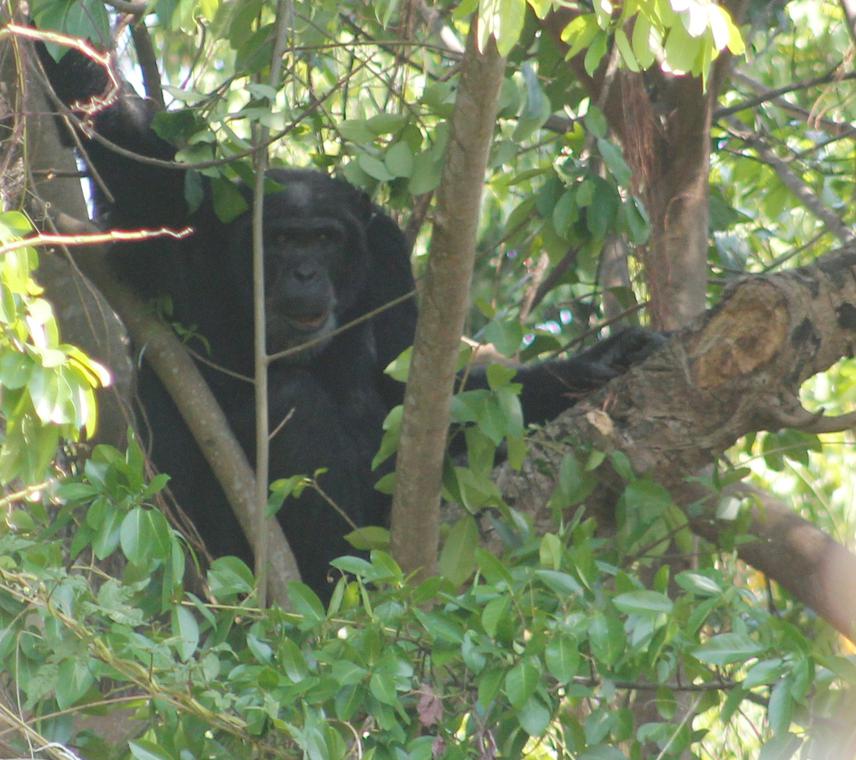Sood Athumani Ndimuligo
The aims of this study are to quantify chimpanzee population metrics, genetic structure and diversity, ranging patterns, resources dynamics and nesting behaviour in savanna woodlands.

Savanna chimpanzee. © Sood Ndimuligo
Chimpanzees (Pan troglodytes) are currently endangered (IUCN Red List of Threatened Species, 2006), as only 30% of the global population that existed a hundred years ago remains. Their numbers across Africa continue to decline due to increases in human population size, forest clearing for timber and agriculture, fuel wood and charcoal production, hunting, and diseases. Studies to estimate chimpanzee population size and density are critical for conserving the species; however current estimates have inherent methodological problems: nest production and decay rates have been used to calculate chimpanzee densities based on values derived from one study area, ignoring the effects of local ecological and climatic conditions a potential source for underestimation or overestimation of the densities, most nest counts studies have been carried out over a few weeks and thus have not adequately documented how chimpanzees use their habitat through time and in different seasons, transects have left out areas where the apes can also exist and have not covered equally all vegetation types within the habitat, most studies have not studied the spatial-temporal availability of chimpanzee resources and estimates based on nest counts do not inform us precisely as are presented with larger confidence intervals in the densities and the nests do not distinguish individuals made them. This study is a step towards this direction and will employ a multifaceted approach by incorporating: DNA techniques, habitat use, nest counts on surveys and transects and ecological data such as fruiting patterns of food trees.
Molecular techniques today provide opportunities to analyze DNA data for accurate population parameters, genetic structure and diversity. This allows us to obtain reliable population metrics and their genetic complexities for conservation planning. In addition, determining home range size, ranging behaviour, potential dispersal areas between subpopulations, measure spatial-temporal availability of the apes’ resources in a given area are essential information for establishing sound management plans as well as monitoring of population dynamics in the region.
The results of this study will be useful for landscape management planning of western Tanzania aimed at improving long-term conservation of chimpanzees through incorporation in the existing conservation strategies and the reserve designing efforts underway. Results dissemination will include presentations to research institutions, District and Regional authorities and tailor made lectures to schools (primary and secondary) in western Tanzania through Roots and Shoots program, developed by the Jane Goodall Institute to increase awareness on the conservation values of the species and its habitats.